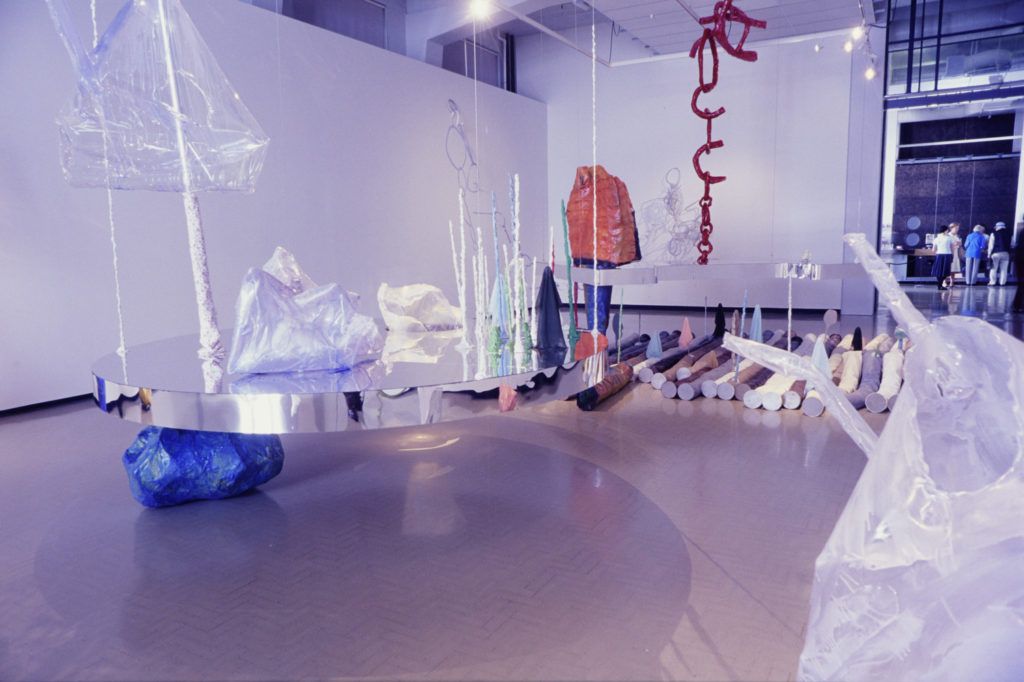PUBLICATION essays Amanda Rowell, Martin Poppelwell
Sydney artist Mikala Dwyer offers her infantile take—perhaps revenge—on formalist sculpture. Her lurid, dazzling, cacophonous, and gimmicky installation incorporates novel forms and diverse materials: fibreglass, polystyrene, silicone glue, plastic, papier-mâché, plaster, glitter, paint, vinyl, fabric, clay, stockings, electric lights, and more. Three hanging islands are clad in a bendy mirror-like material that reflects other works and viewers funhouse style. Boulder-like and cave-like forms sit upon their shimmering surfaces, while vinyl-clad 'logs' gather on the floor below. See-through plastic bubble-boulders are deployed in various ways. Plasticine stalagmites, recalling Giocometti's thin men, mushroom up. Giant deformed chains hang from the ceiling and walls.
As artist Martin Poppelwell writes in the catalogue, ‘With the evidence of its making somehow crystallised in matter, her objects have the most basic aspirations: to stand up, to breathe, to lie down, to sit, to hang, to begin, and to end’. A reviewer calls the show ‘a cross between Superman’s arctic fortress and Liberace’s drawing room’.
Saatchi & Saatchi's unconventional ad campaign reproduces correspondence between artist and gallery and tax invoices for materials. Saatchis also develop a typeface based on Dwyer's handmodelled letters. The Gallery shoots a short video of Dwyer explaining herself and presents it in the entrance to the show. Jim and Mary Barr send their apologies for missing the opening, explaining that Ronnie van Hout ‘will only have one fortieth birthday party’.























